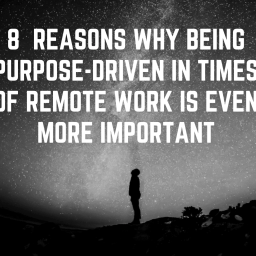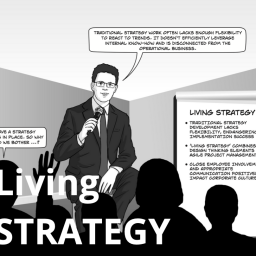Avoid Burnout & keep Morale Up in Remote Teams
Enable your remote team to thrive from home. Here are some tips to reduce burnout, enhance productivity, and boost mental wellbeing in remote teams.
Most managers and leaders have known for a while that a “work from home” revolution was on its way. However, the expectation has been that the transition from standard office environments to home-based work would come in a trickle. This would leave room for success metrics and research to dictate policies and practices. Yes, everything from expectations and etiquette to best practices for technology would all get worked out naturally and carefully over time.
Enter COVID-19
The COVID-19 pandemic has rushed in the “work from home” revolution as a deluge that has many leaders feeling “up to their shoulders” in the waters of a new medium of doing business. It’s no surprise that it didn’t take long for burnout to kick in. Yes, you probably know what I’m talking about if you’re overseeing a (newly) remote team. However, I want to focus on the positive before we get dragged into the pitfalls of burnout. A study that was published in the Quarterly Journal of Economics a few years ago puts the spotlight on why we should all be interested in work-from-home policies even when there is no pandemic breathing down our necks. Let’s get on with the good news!
Research based on data from a Chinese travel firm reveals that those who worked from home saw performance increase by 13 percent during nine months. That’s nearly a full day’s increase in productivity each week. What’s more, the rate of employees leaving the firm dropped by 50 percent! That means that they are doing more work while being happier. Similar studies performed around the world have produced similar findings. I start with this good news because I fear that many bosses and leaders may be underestimating and undermining the abilities of their employees to thrive during this shift to remote work. I also worry that coping strategies like micromanagement and inflexibility could produce the opposite of desired outcomes. This will ultimately stagnate individual productivity, company productivity, industry productivity, and global productivity!
It’s important to walk into this situation with the mindset that your employees will rise to the occasion. The Pygmalion effect makes it clear that they will only if you will. Research done on the Pygmalion effect shows that workers with a manager who believes they are high performers will outperform a group with a manager who thinks the reverse. The innate abilities of either group have no noticeable impact on the outcome. Of course, this isn’t a case of wishful thinking translating to business sense. Managers have a lot of work to do to get here.
How do we ensure that workers thrive in remote settings that have been thrust upon them? It won’t be easy. Your employees are suddenly working in makeshift work environments alongside their families, distractions, and new stressors. That brings us back to the concept of burnout that we’ve been dancing around.
Burnout may be on your mind if you’re trying to lead a team. After all, you weren’t trained in how to manage a remote team. You may either already be seeing signs of burnout or feel like something is “about to give” within your organization. Don’t wait until employees are disengaged to change directions. There is a lot that you can do from the other side of the screen to boost morale and turn burnout around! There’s a good chance that your team is waiting for some cues that will make them feel more secure and empowered regarding what’s going on.
I want to explore what I’ve witnessed to be the main scenarios that are causing burnout. You may assume that burnout can only occur when employees are dealing with demanding deadlines or upticks in workflow. However, work exhaustion can also stem from simple environmental or procedural imbalances that are creating stress. That’s good news because you can often do small things that replace burnout scenarios with balanced work plans. Let’s now look at the four things that are probably about to set off a big burnout blowout within your remote team. We’ll also dive into the things you should start doing right now to cut burnout off at the pass.
The Big Causes of Burnout in a Work-From-Home Scenario
Let’s first talk about how to recognize a “change in temperature” that you’re feeling among your team. Burnout isn’t exclusive to the shift to remote work stemming from the COVID-19 pandemic. Here’s a look at what contributes to burnout in remote workers in any climate:
- Unrealistic workload.
- A perceived lack of control over decisions.
- Lack of rewards/recognition.
- Lack of community.
- A perceived lack of fairness.
- Work-life imbalance.
- Misalignment between an employee’s values and an organization’s value.
Are some faces suddenly not showing up for Zoom / MS Teams meetings? Are some of your most dynamic employees acting eerily disengaged? Are you perplexed over why productivity seems to be on the decline even though everyone should technically have “more time” because they’re not commuting? The big problem of managing a remote team is that we often see the opposite results from our expectations. What’s more, using the tactics we “know” often deepens the chasm between intention and outcome. I want to now peel open the four surprising reasons why burnout is creeping in. You’ll see how these scenarios all ultimately lead back to the seven points listed above. I’m also going to provide the solutions to these burnout drivers that are undermining your success at a time when a lot is already at stake.
The consequences? Clients will realize very quickly when someone tries to rip them off, which makes them very unhappy and cut off any work connected to that company directly, which will not only lead to zero income but also potentially losing more money that has been gained. And it gets even worse: If you work only with the selfish intent to gain the most profit for yourself, knowing it will harm your customer’s satisfaction you will get a bad reputation for a lifetime.
That’s why it’s so important to always work for your clients, rather than working for your financial growth. This does not only make you a better human being but also will lead you to more financial growth then you can even imagine.
Scenario 1: Incessant, Around-the-Clock Communication
We have 24-hour access to email and messaging platforms that allow us to stay in constant contact with our colleagues and team. What could go wrong? Unfortunately, remote work can cause people to over-communicate because they are attempting to overcompensate for the fact that they are not being “seen” in the office. This stems from feelings of insecurity about not appearing engaged. Even one “super communicator” within a team can spread burnout to the entire team because other employees may feel as though they have to “keep up” with the very eager and responsive employee at all hours of the day and night.
The Solution
As a leader, it’s your job to make every member of a team feel secure about their at-home status. Make it clear that you don’t feel as though being out of sight means being out of mind. You may even want to lead by example by setting your boundaries. For instance, you may want to make it clear to your team that you will not be responding to non-emergency emails during a fixed window of time during evening hours or weekends. You are essentially giving everyone on your side a “quiet zone” when you do this. Also, you are modeling the importance of looking out for one’s own mental and physical health.
Scenario 2: The Insulting "Business as Usual" Approach
Are you trying to maintain “business as usual” in unusual times? Your team members may feel insulted and resentful if you’re failing to acknowledge the stress of the present situation. Are you providing praise over the way your team members are adjusting to changing norms and expectations? Are you checking in to see how they are coping with various changes and adjustments in both their work schedules and personal lives? It’s time to address the elephant in the room!
The Solution
For managers, this is a time to focus on addressing the uniqueness of the situation without creating excuses for allowing convention to fly out the window. I find that it’s essential to create a separate designated “space” or channel where non-work issues can be discussed. According to one 2016 study, the social connection in the workplace drives productivity and engagement. Researchers found that feelings of reciprocity drive the level of energy intensity in a work environment! Doesn’t that sound like exactly what your team needs right now? Here’s a look at some ways to create connection and support among a remote group:
- A daily “check-in” chat or virtual meeting where employees share tips and strategies they’re learning to manage stress. This creates a “community” aspect that connects team members even though they are remote.
- Daily mental-health tips. Send one tip each day that will help your employees to prioritize mental health or relaxation. This could be a link to a meditation app or a reminder to stop to take a walk during lunch. “Sanctioning” mental-health breaks is vital to avoid feelings of guilt over time spent away from the keyboard!
- A “recipe swap” thread where team members can exchange recipes or upload photos of what they’ve made.
All of these tips place wellness at the forefront without creating noise and chatter within productivity channels. Team members feel like they are being provided spaces where they can feel human during a time when a connection is so important. Ultimately, you are inviting the “elephant in the room” in for a discussion without allowing it to stomp all over your productivity channels!

Scenario 3: Lack of Clarity
A lack of clarity regarding procedures and expectations can be detrimental to the productivity levels of even the most high-performing employees. Uneven ground leads to shaky steps in a remote environment. Clear expectations lead to engagement. However, recent findings from Gallup show that just 33 percent of employees in the United States are engaged. That’s tragic when you look at the fact that the same Gallup analysis found that companies with high employee engagement are 21 percent more profitable, 17 percent more productive, and experience 41 percent less absenteeism.
The Solution
Let your employees become more engaged by providing more explicit expectations. That doesn’t even necessarily mean natural expectations. Even demanding expectations can be accepted for what they are as long as they are expressed clearly. Here are the big things to clear up now:
- Is everybody expected to be “plugged in” and accessible during hours that constitute a specific and particular working day?
- Is there any flexibility for people who are suddenly juggling childcare duties to amend their work schedules?
- Is participation in video chats and meetings mandatory?
- How much interaction is expected throughout the workday?
- Are training resources available for new technologies that are being used in remote work?
- Are employees expected to handle tech problems on their own? Is there a dedicated resource line for tech issues?
- Is vacation/sick time handled the same in a remote setting?
- Is messaging preferred over telephone communication?
You will be amazed by the way clear-cut expectations create confidence among a remote workforce. Clear expectations and boundaries simply provide the confidence necessary to move forward with tasks instead of getting caught up in a second-guessing mindset. They also move opportunities for resentments or “excuse-making” out of the way. Of course, it should be made clear that expectations will be adjusted and clarified as information regarding what produces the best outcomes for employees is discovered. Acknowledge and embrace the learning curve instead of adopting a “boss knows best” mentality if you want to get the team engaged.
Scenario 4: Lack of Flexibility
We highlighted the importance of providing clarity regarding work-hour expectations a little earlier. However, this small detail is worth revisiting because it has enormous implications for burnout. Yes, it makes sense to have everyone on roughly the same schedule to assist with communication and collaboration throughout the day. However, this may be an area where being too rigged can come back to bite you. This is especially true if the work policy has been shifted to a remote one due to COVID-19. Many employees are dealing with significant adjustments that can include everything from handling childcare while working full time to trying to find safe times to visit grocery stores. Flexibility can be a big ally of productivity in these cases.
The Solution
A decision must be made. Do you want to build some flexibility into the working day? It’s important to know that giving team members some freedom to integrate working hours into their own lives can boost productivity, engagement, and retention. That’s because employees appreciate a work-life balance. Besides, allowing employees to dictate their schedules to some degree gives them a sense of autonomy that can carry over into the workplace in the form of confidence and creativity! You may find that some employees take this freedom and run with it in the best way possible. Let’s take a look at one scenario.
Let’s say that an employee named Paul happens to know that he can get a lot of work done if he wakes up at 4 a.m. to focus in a quiet environment before the rest of his family wakes up. Paul can realistically put in about four solid hours of uninterrupted, heavily focused “brain work” before the rest of his team even plugs in the for the day. Good for Paul! However, this may not be good for Paul if his boss insists that everyone needs to be fully plugged in and available from 8 a.m. to 5 p.m. daily. Following his plan of waking up early to get work done would mean that Paul would go nonstop from 4 a.m. to 5 p.m. because his extra hours “don’t count.” As a result, Paul may be less productive while getting less done between 8 a.m. and 5 p.m. than he would have between 4 a.m. and 8 a.m. Paul suffers. His team suffers (from reduced productivity). And, Paul’s family probably suffers, as well.
Allowing an employee like Paul to “bank” hours in the morning in exchange for the ability to take a few hours off during the rest of the morning while he feeds his toddler breakfast or goes for a jog with his dog could potentially unlock Paul’s maximum productivity. It could also inspire Paul to do his best work because he is in love with his flexible, personalized schedule. Paul happily plugs back in a little later in the afternoon to continue his work, get feedback from colleagues, and participate in meetings. He may even find that he has time to catch up on work during the evenings without interruptions from emails when other team members have unplugged for the day.
This is one of those cases where the law of unintended consequences could rear its head. A boss may assume that requiring Paul and the rest of his team to plug in during set hours is the way to keep track of everyone while ensuring that everything is getting done. However, it may ultimately be causing burnout in an employee like Paul instead of allowing him to do his best work. Paul is a case where an employee doesn’t need to suffer from burnout just because schedules have shifted. He may even find a new way to thrive more than ever before by tapping into quiet pockets of the day. What’s more, the most significant benefit of all for Paul’s productivity could be having a boss who trusts him enough to stay in control of his day.
Conclusion: What Is the Biggest Antidote to Burnout?
Everyone in a leadership position wants that secret, proven strategy for zapping burnout. They often think that complicated protocols that come down from human resources through the chain of command are going to somehow “dictate” workers out of burnout. I say that doesn’t align with what I’ve seen in my years of coaching executives and speaking in front of business leaders. The antidote to burnout is exceedingly simple.
It’s trust.
Make all decisions with an implicit level of trust that employees will do what they need to do without “taking liberties.” Allow for flexibility and “humanness” as people adjust to changes they never asked for! Lastly, lead by example to take away the shame and stigma from taking time for mental health. No employee should feel shame over tending to their lives and obligations while working from home. Employees who feel like they have to prove their commitment or justify their worth will rob your entire team of productivity by clogging communication channels with chatter that shows they are “working.” Trust is what sets apart confident, productive teams from groups that are drowning in the confusion of poorly defined remote policies. Undermining your team’s ability to thrive in a changing environment undermines your organization’s ability to be dynamic in any challenge.












